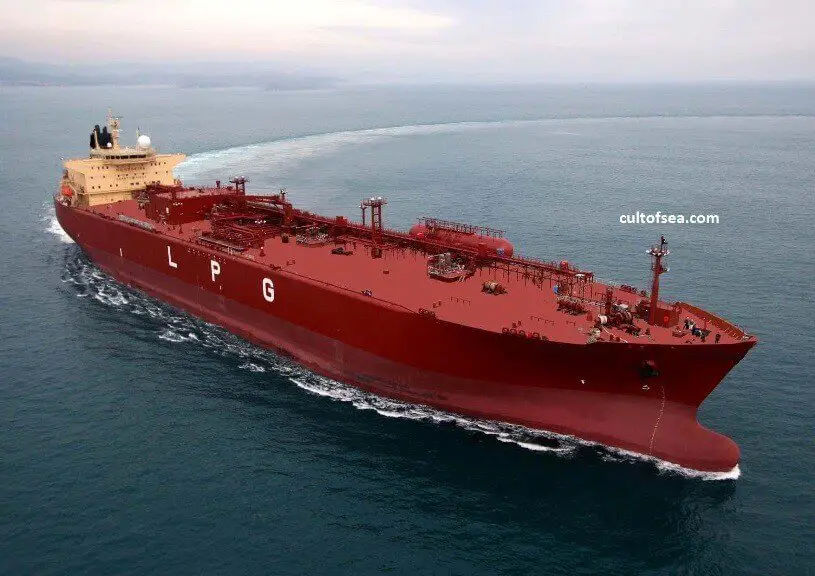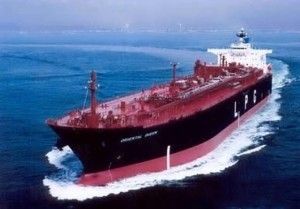Purpose
The term Cargo Conditioning refers to the “maintaining” during the passage of:
- Cargo quantity without undue losses.
- Cargo tank pressure/temp within design limits.
- maintaining or altering cargo temperature as required.
This is achieved by reliquefaction. Cargo conditioning may not be necessary on ships with pressure vessel tanks, depending on filling limits.
If reliquefaction plant is fitted the responsible personnel should have a thorough understanding of its operational principles. When running, the plant should be monitored so that anything affecting its safety or efficiency is quickly recognised and corrective action is taken. The plant is normally fitted with shutdown devices to sense high liquid level, temperature or pressure, every effort should be made to anticipate and correct conditions before shutdown occurs.
Care to be taken not to unnecessarily run the cargo compressors when the required cargo parameters are maintained, thus avoiding additional fuel consumption and running of auxiliary engines.
Cargo Control Monitoring During Voyage
Cargo condition shall be monitored daily at sea and a log sheet with temperatures, pressures and soundings for each cargo tank shall be maintained.
The frequency of regular controls shall be as necessary for safe monitoring, depending on actual cargo specification, the stability of cargo condition, and duration of voyage and cargo plant operation during the passage.
Especially when cargo is transported near the limitations of temperature, pressure or level, more frequent controls are necessary.
Level Control
During the loaded voyage, the level in the cargo shall be controlled by the high-level alarm and shutdown system in operation.
High-level alarms may have to be overridden due to sea conditions. In such case, the level in tanks shall be recorded at least every 6th hour on a proper log sheet, or more frequently as necessary to avoid any risk of tank overfill dependent on the actual situation.
Temperature and Pressure Monitoring
Standard procedure is to maintain the loaded temperature of the cargo during the sea passage. All instructions for cooling down cargo during passage shall be given by, or be cleared by the Operation Department.
When cargo has to be cooled down during the passage, the standard procedure is to commence cooling down at the first opportunity and required cargo temperature maintained during the passage.
Records for the cooling operation must be kept onboard and temperature/pressure shall be recorded at least once every watch. The records must also include temperature/pressures for the cooling plant at all stages.
Verification
The chief officer or a responsible officer reporting to the chief officer shall carry out monitoring of cargo during the voyage. The Master shall verify that the procedures have been followed.
Re-liquefaction
General guidance on safe procedures for re-liquefaction and boil-off control is given below. The detailed instructions for any ship depend upon the system fitted. The manufacturers operating instructions should be closely followed.
The most common of this system works by compressing the cargo vapour and condensing it in a seawater-cooled condenser. Alternatively, a refrigeration gas from a secondary refrigerating unit (cascade-type refrigeration) may cool the condenser. Another type of re-liquefaction is achieved by circulation of the refrigerant through coils inside the tank or through a separate heat exchanger outside the tanks (indirect cooling).
The vapour of certain cargoes (e.g. ethylene oxide, propylene oxide) cannot be compressed. Indirect cooling can only refrigerate such cargoes, and cargo compressors normally have to be isolated or blanked off.
LPG is normally re-liquefied by direct compression and condensation in direct re-liquefaction. Colder cargoes such as ethylene require cascade systems.
During the ballast passage, the tanks are kept cold using coolant retained onboard. This is known as a heel. Regulations do not permit LPG boil-off to be used as fuel and it is, therefore, re-liquefied and returned to the tanks. The return should be by the spray line, if fitted, for best cooling efficiency.
Whatever system is fitted the specific operating instructions should be observed in addition to the following general precautions:
- The purpose of the re-liquefaction system is to prevent loss of cargo and ensure that the cargo liquid is either kept at the loading temperature or is at the temperature required for discharge on arrival
- In the latter case, it may be necessary either to cool or to warm up the bulk liquid on passage. If the system is only used to keep cargo tank pressure just below the relief valve set point, the cargo will warm up to a new temperature and it may be too hot for discharge at the terminal. If it is necessary to cool the liquid down on passage, the loading temperature and system capacity should be considered to ensure that the necessary operations could be completed during the voyage.
- If two or more cargoes are carried simultaneously, they shall be kept segregated. Particular care is required with incompatible cargoes.
- Gas detection equipment in spaces containing re-liquefaction plant, instrumentation and controls shall always be operated if the ship is not certified gas free. Upper and lower sample points (if fitted) should be selected according to the relative vapour density of the cargo.
- Filters on the suction side of compressors should be checked and carefully cleaned if necessary. If they are blocked the efficiency of the plant may be reduced drastically.
- The lubricants used for all machines should be compatible with the cargo and when stopped. Oil levels and crankcase heaters should be checked for correct functioning according to the PMS.
- All plant, instrumentation, control and shut down equipment should be tested before the operation begins.
- The precautions on ice or hydrate formation, reactivity and cargo contamination should be observed.
- All pipelines and valves should be double-checked to ensure that they are correctly set before starting the plant.
- To prevent abnormal pressure, the cooling water supply to condensers should be established and the refrigerant system started (where fitted) before cargo compressors are run.
- Cargo compressors should never be operated with discharge valves shut.
- Vacuum pressures should normally be avoided in any part of the system to prevent the ingress of air. Flammable vapour/air mixtures should be avoided through cargo compressors.
- Refrigerant compressors if fitted should be started and suction valves opened very slowly to prevent damage from liquid carry-over.
- If the capacity of cargo or refrigerant compressors is controlled manually, the plant should be started on the minimum setting and the capacity increased gradually as necessary.
- Any incondensable gases in the vapour itself or even the inert gas remaining from previous purging (e.g. ethane, methane) will affect the operation of the re-liquefaction plant or maybe. Incondensable will cause abnormally high condenser pressure and will reduce condensation of the cargo vapour. To re-establish full condensation, the incondensable have to be vented regularly. Problems with incondensable mainly arise during the early stages of re-liquefaction. Re-liquefaction plant liquid levels should be checked regularly during operation to prevent overfilling receivers or condensers. Sticking control valves or expansion valves may cause this. It is essential to monitor the re-liquefaction plant operating conditions carefully to be aware of what is happening; it is desirable to keep comprehensive records so that any unexpected changes can be quickly noticed and remedial action is taken.
- Care should be taken to prevent liquid cargo from entering the compressors, particularly if liquid separation equipment is not fitted. In heavy weather, this could be a significant problem that may require shutdown of compressors. Under certain conditions, liquid entrainment may also occur during spray cooling of the tanks. Liquid entrainment in the vapour may cause severe mechanical damage to compressors.
- If condensate is returned to two tanks or more simultaneously, or if the vapour is taken from several tanks and is returned to a single tank, the liquid levels should be checked regularly and action is taken to avoid possible overfilling.


Leave a Reply